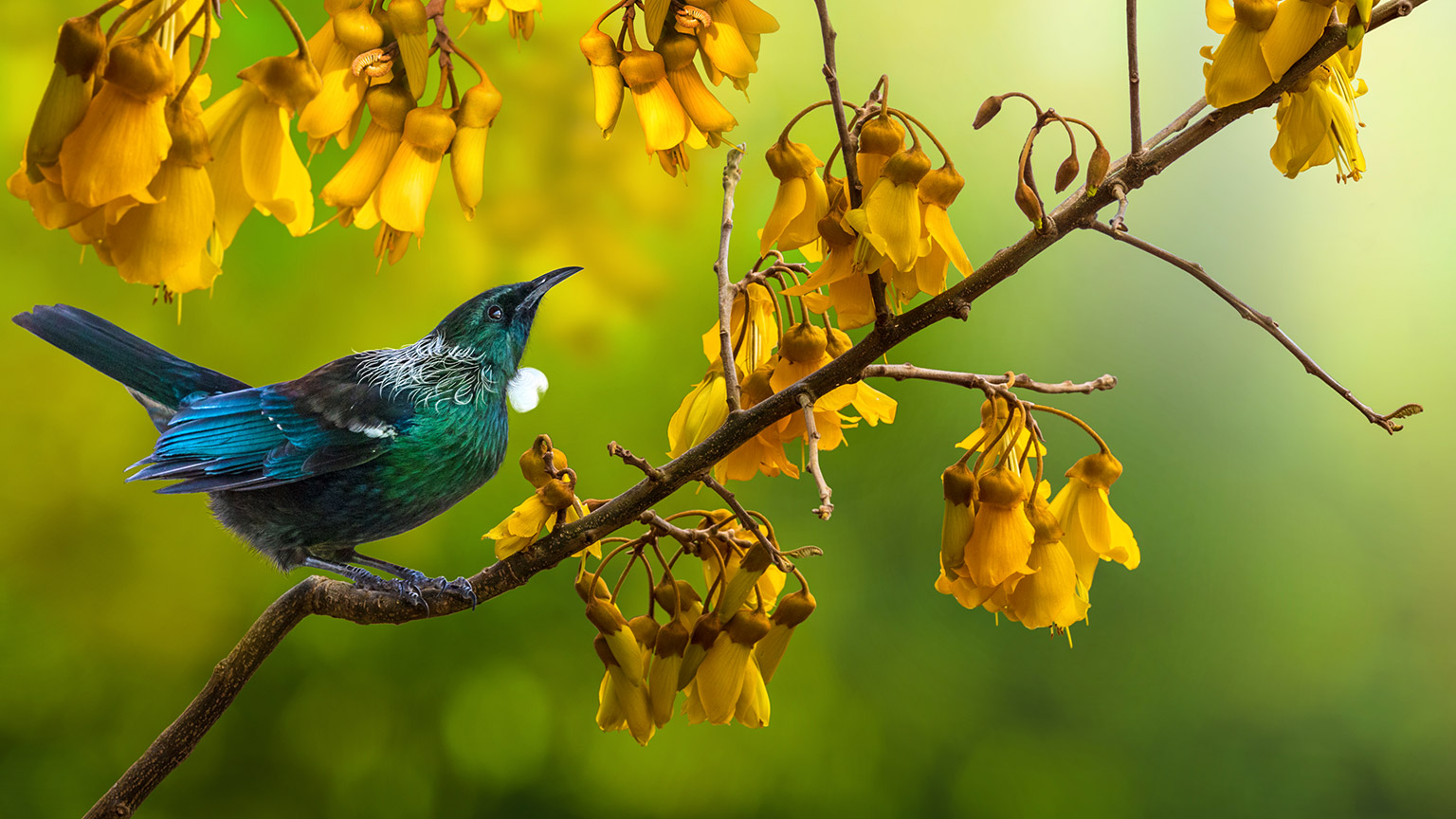Both plants and animals are classified using taxonomy. The beautiful kōwhai tree has distinctive yellow flowers providing the nectar that tuis love so much. Kōwhai is the word for yellow in te Reo Māori.
As we learned previously, taxonomy is the science of classifying and naming living things. It is a way of creating a sense of order from the diversity we see all around us. When we are classifying plants, we are using botanical taxonomy.
We also need to be able to talk about and write scientific names correctly. At least when we order plants, for instance, we know we'll be getting the right plant.
If you ordered "20 rock lilies" for your garden expecting to get renga renga (Arthropodium cirratum), you might be surprised to find that your order has been filled with 20 Dendrobium speciosum.
 |
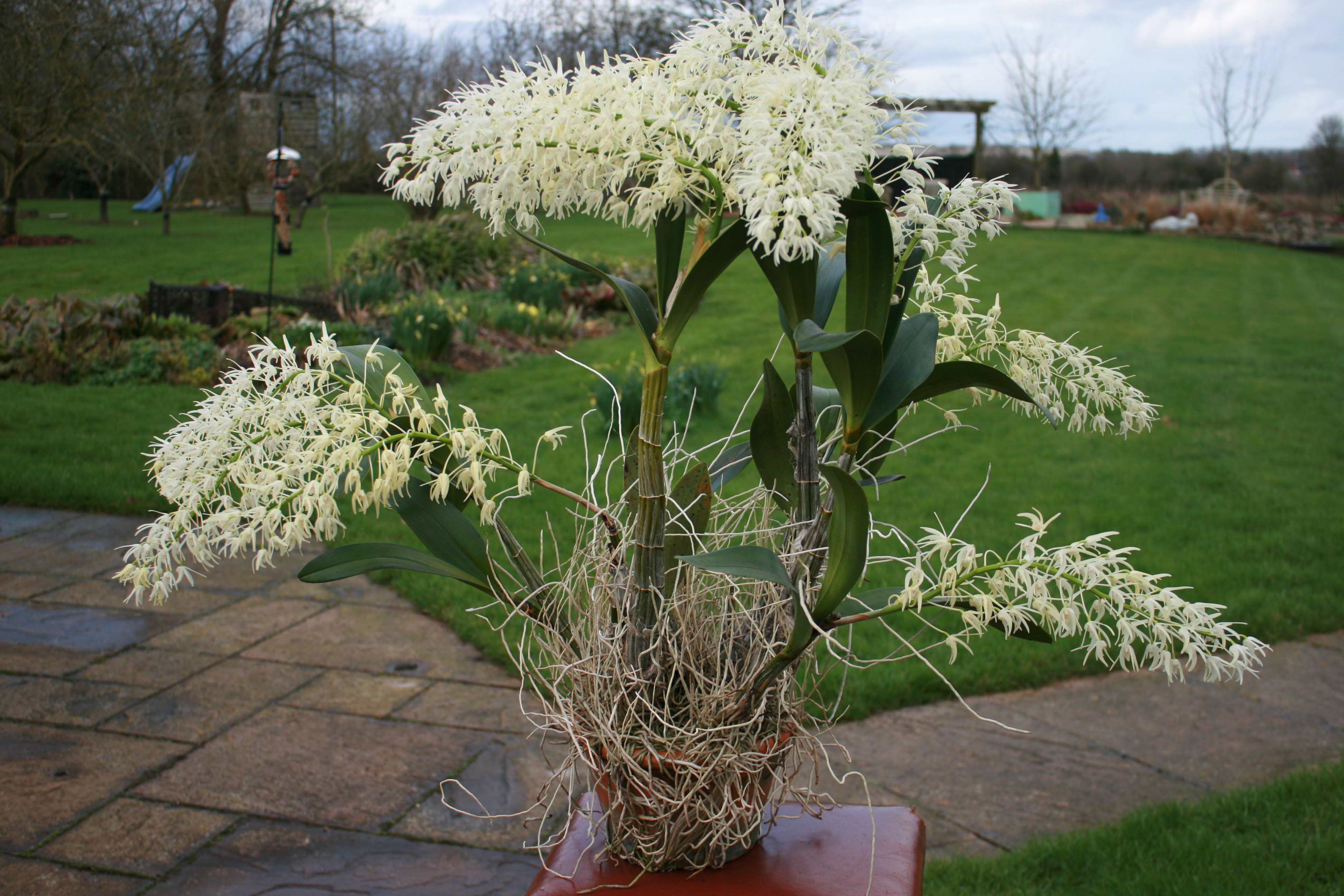 |
| Arthropodium cirratum (common names: renga lily, rock lily) is a clumping plant with small flowers. Source: Auckland Botanic Gardens |
Dendrobium speciosum (common names: rock lily, rock orchid, cane orchid) is an orchid that grows on rocks or trees in coastal areas. Source: Eliteorchids |
To avoid this, we use scientific names. Nomenclature, as we have mentioned previously, is the term given to a system of names used in a particular specialist field. In relation to plants, we are interested in botanical nomenclature, and that's what we'll be looking at in this topic.
As we learned earlier, the most widely accepted hierarchical levels in botanical taxonomy are from the Linnaean system of classification and are:
- Domain
- Kingdom
- Phylum (for animals) or Division (for plants and algae)
- Class
- Order
- Family
- Genus
- Species.
You may remember this graphic indicating the hierarchical relationship between the levels:
These are often broken down into more levels, such as Subkingdom, Infrakingdom, Superdivision, Subdivision and so on at the higher levels, as with the ITIS taxonomy described previously in this programme.
When we talk about higher-level or higher-order classification we're generally referring to those levels of the taxonomy above family. Let's look at a few of these, specifically superorder and order.
Subclass and superorder
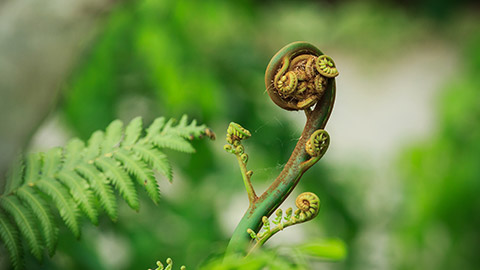
Subclass and superorder are taxonomic ranks in the middle of the taxonomic hierarchy. They are used to group related orders based on their shared characteristics and evolutionary relationships.
Subclass sits below class and above superorder. They often end in "-idae" – e.g. Pinidae or Polypodiidae, although this will vary depending on the taxonomy being used.
Superorder sits below subclass and above order. They often end in "-anae" – for example Asteranae and Lilianae, but again, this may vary.
These two ranks are not used in all classification systems, but they can be helpful in organising and understanding the relationships between different groups of plants.
Order
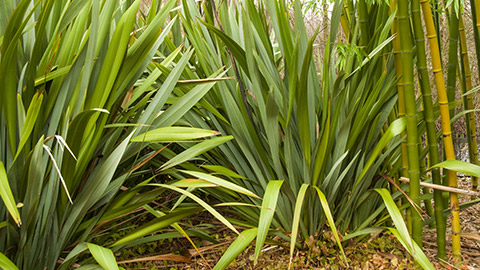
Order is a taxonomic category that groups together related families based on shared characteristics.
Each order is typically named after one of the included genera, and the name of the order is usually formed by adding the suffix "-ales" to the stem of the genus name. For example, the order to which the rose family belongs is called Rosales. The classification of plants into orders is based on a variety of characteristics, including the structure and arrangement of flowers, leaves, stems, and other features.
In this programme we aren't too concerned with the higher levels of the taxonomy, but it is useful to know that:
- subclasses usually end in "-idae"
- superorders usually end in "-anae"
- orders usually end in "-ales".
This can come in handy when you're searching for information about specific plants.
When we talk about higher-level or higher-order classification we're generally referring to those levels of the taxonomy from family down. Let's look at family, genus, and species which are arguably the most important classifications in a practical sense (most commonly used).
Family
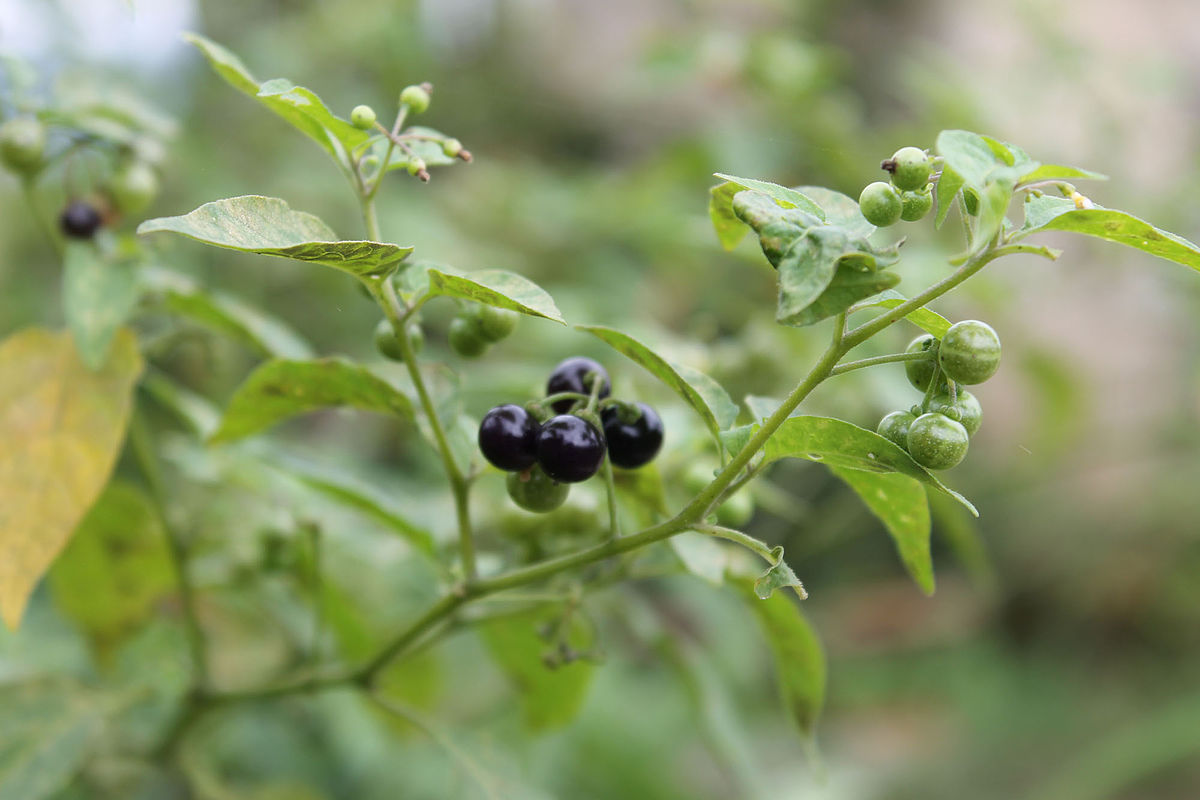
Family is a taxonomic rank used to group related genera (plural of genus) of plants based on their shared characteristics and evolutionary relationships. Families are one of the major categories used to classify plants, and they are used to help identify and understand relationships between different plant groups.
Each family is defined by a set of shared characteristics, such as the structure of their flowers, fruit, leaves, stems, and/or other features. For example, the family Rosaceae is characterised by having flowers with five or more petals and a receptacle that expands to form a fleshy fruit, while the family Fabaceae is characterized by having flowers with a distinctive pea-like shape and fruit that splits along two seams.
Family names in botanical taxonomy usually end in "-aceae". For example, the family Rosaceae, Fabaceae, and Solanaceae. However, there are some exceptions to this convention.
Plants in a family often share similar characteristics. For instance, many plants in the Lamiaceae family have square stems. Other characteristics of this family include the presence of opposite leaves, often with serrated or toothed edges, and usually aromatic foliage due to the presence of essential oils in the plant tissues.
Activity – Pick the right family
Genus
Genus is a group of related plant species that share similar characteristics. A genus is a taxonomic rank that is used to classify and organise plants based on their shared features such as morphology, reproductive structures, and molecular characteristics.
Solanum (nightshade) is a genus that includes edible plants such as tomatoes, potatoes, and eggplant (or aubergine) as well as ornamental (non-edible) such as woolly nightshade, or tobacco weed.
Species
Botanical taxonomy is a binomial nomenclature, which means that each species is given a unique scientific name consisting of two names: the genus and species names. The second part – the species name – is sometimes called the specific epithet.
Some examples of species from the Solanum genus are:
- Solanum lycopersicum (tomato)
- Solanum tuberosum (potato)
- Solanum melongena (eggplant, aubergine)
- Solanum mauritianum (woolly nightshade, tobacco weed).
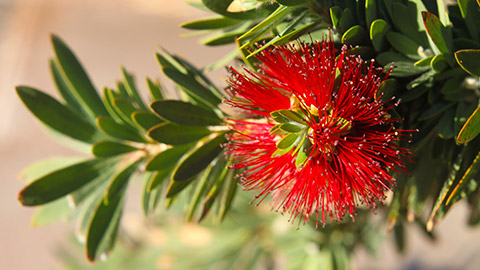
Some examples of native rakau (trees) of Aotearoa are:
- Metrosideros excelsa (pōhutakawa, shown above)
- Podocarpus totara (tōtara)
- Dacrycarpus dacrydioides (kahikatea)
- Sophora microphylla (kōwhai).
The specific epithet is usually derived from Latin or Greek and can describe a characteristic of the species, the location where it was discovered, or honor a person or organisation. The combination of the genus name and specific epithet provides a unique name for each species, which allows for accurate and consistent identification.
Some examples of common specific epithets and their meanings are. You may wish to click the name of the plant to learn more at New Zealand Plant Conservation Network:
| Epithet | Meaning | Example | |
|---|---|---|---|
| Albiflora | "white-flowered" | White rātā (Metrosideros albiflora) | 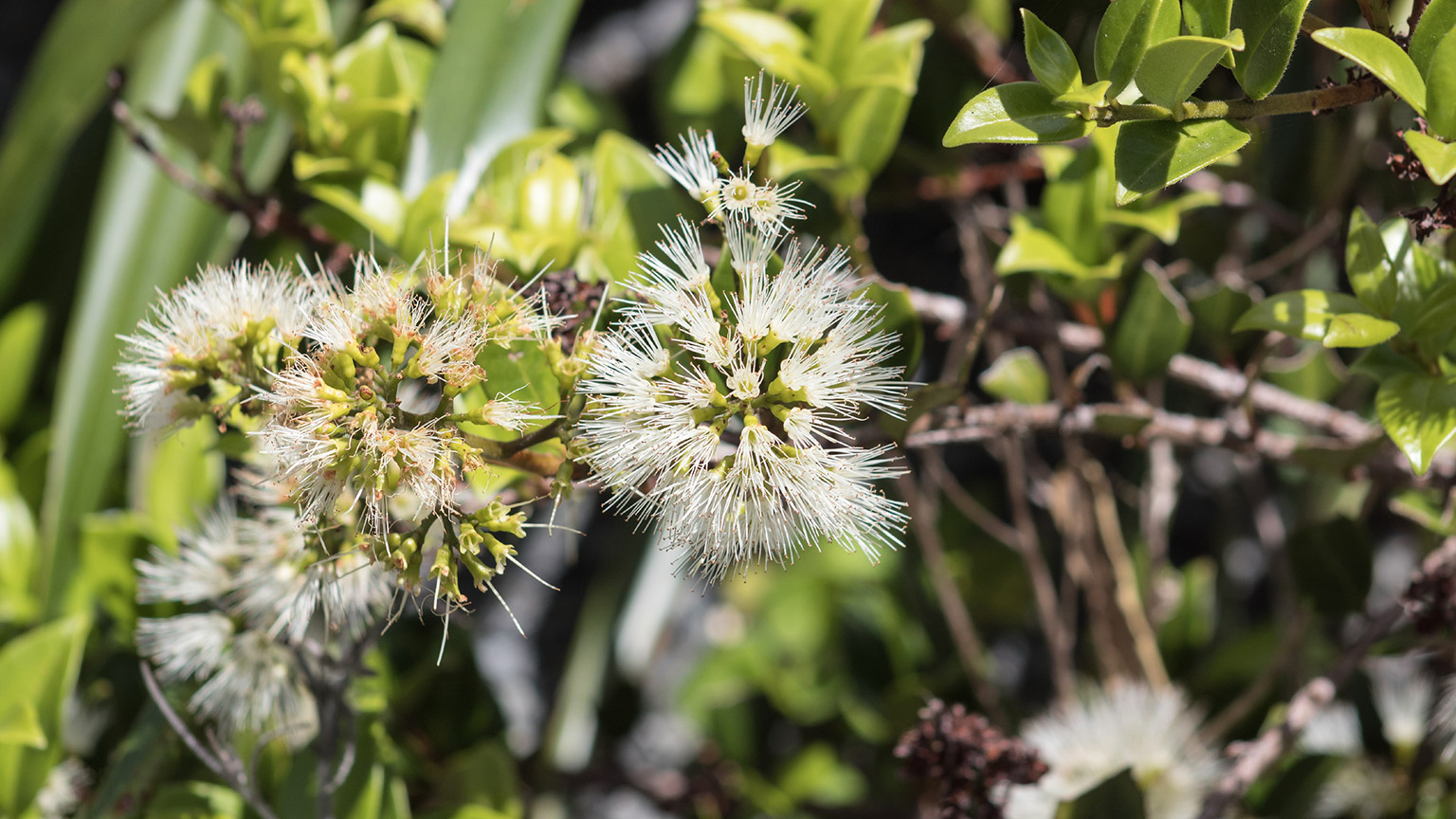 |
| Aurea | "golden" or "yellow" | Greenovia aurea (Aeonium aureum) |  |
| Canadensis | "of Canada" | Canadian honewort (Cryptotaenia canadensis) | 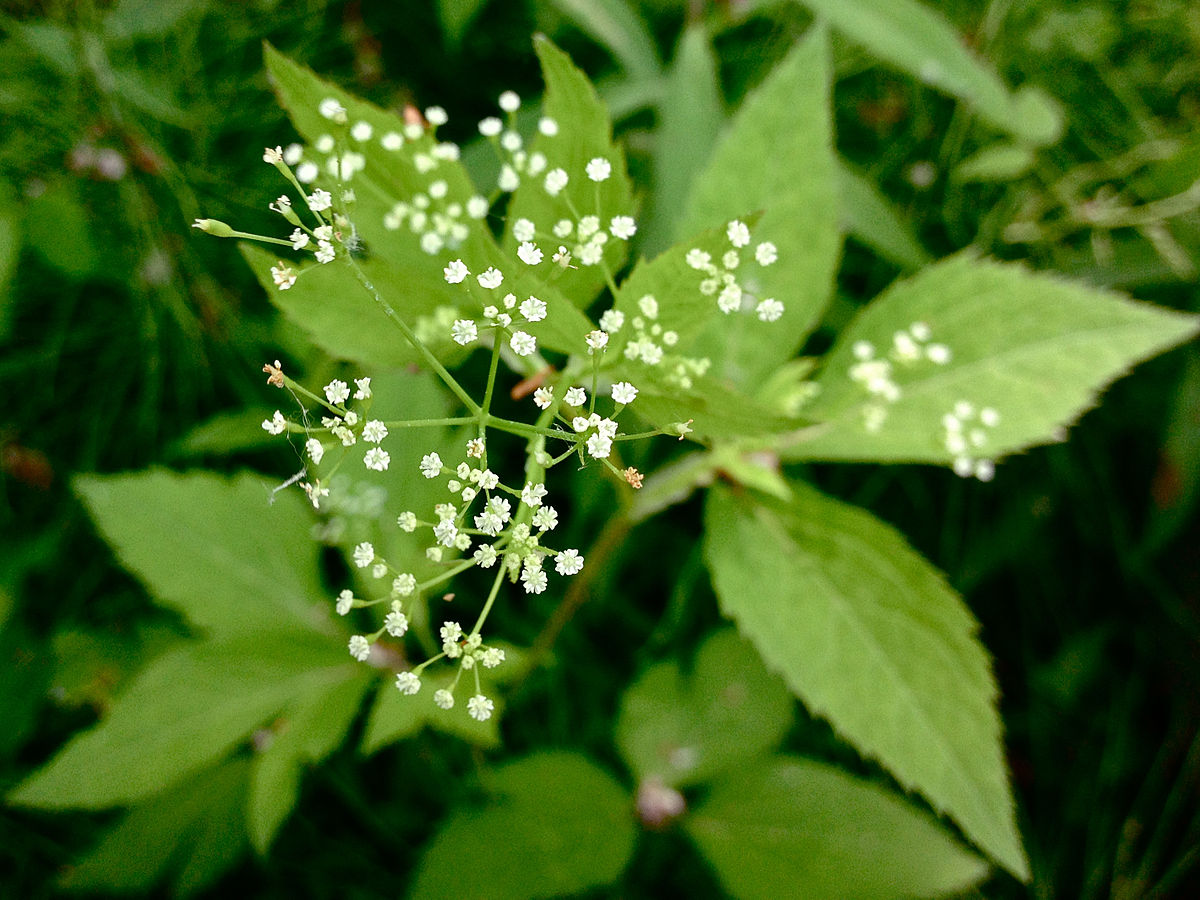 |
| Grandiflora | "large-flowered" | Southern magnolia (Magnolia grandiflora) | 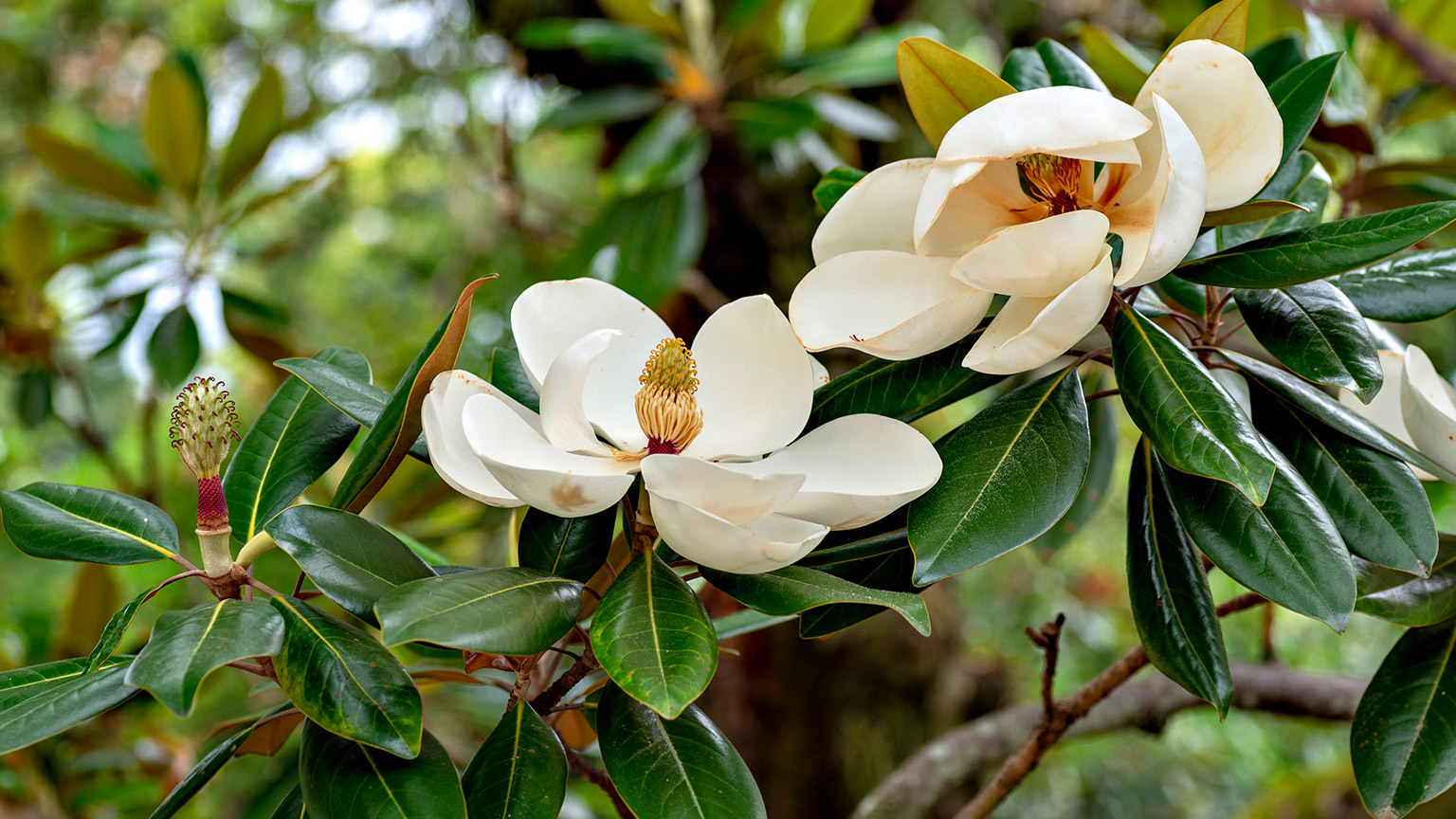 |
| Japonica | "of Japan" | Japanese Camelia (Camelia japonica) | 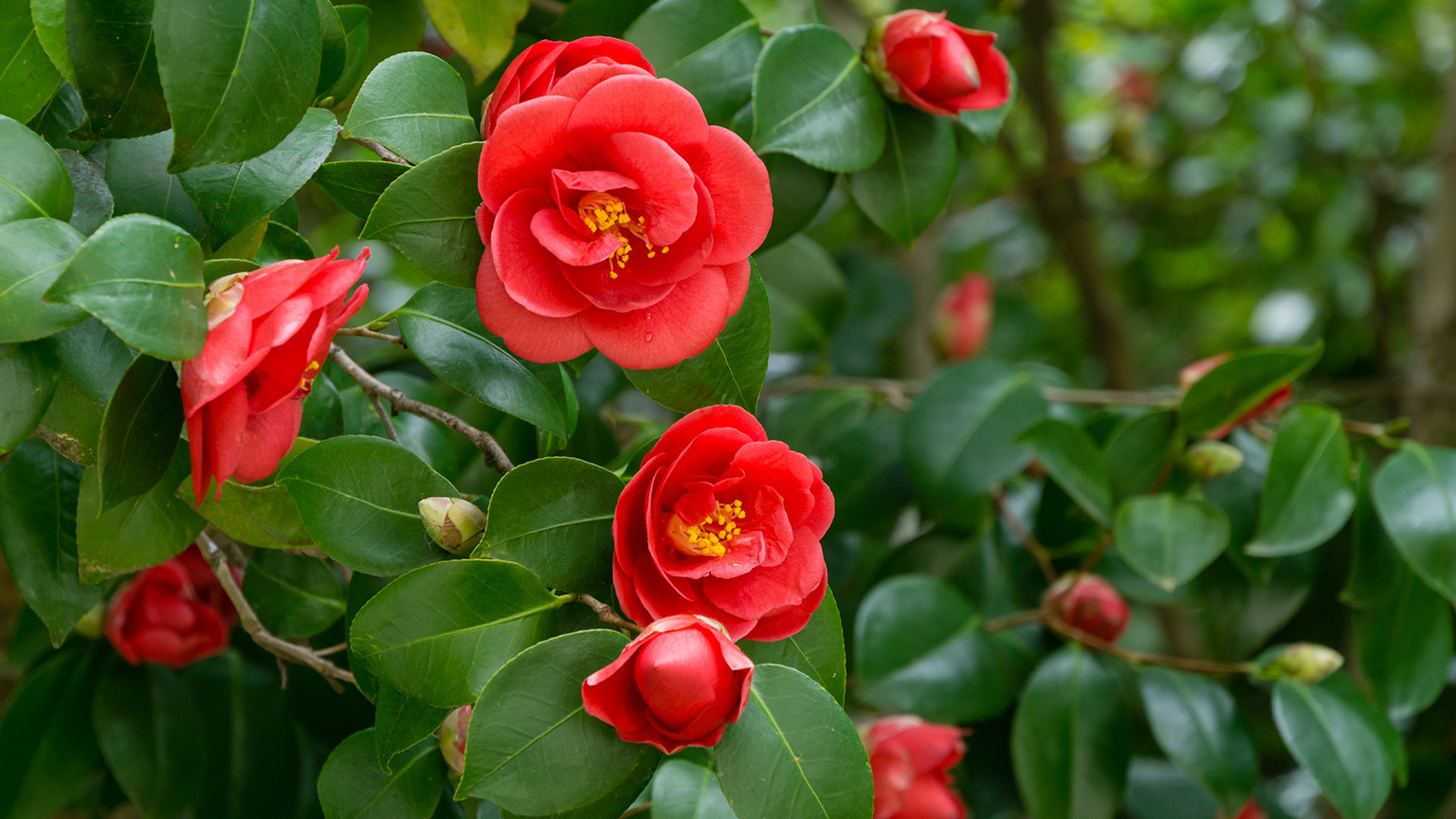 |
| Officinalis | "used in medicine" | Asparagus (Asparagus officinalis) | 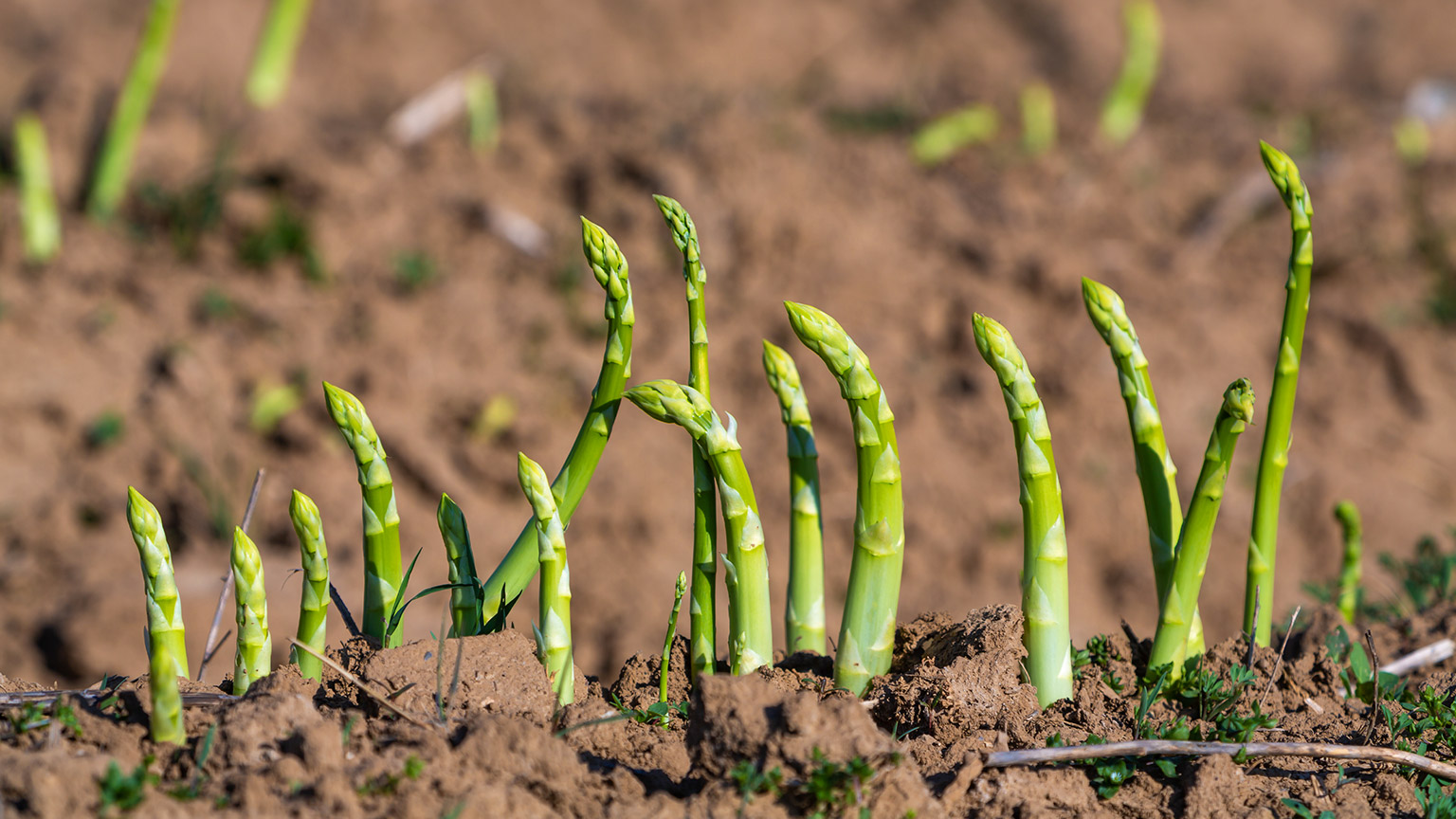 |
| Pendula | "hanging" | Buttercup Bush (Senna pendula) | 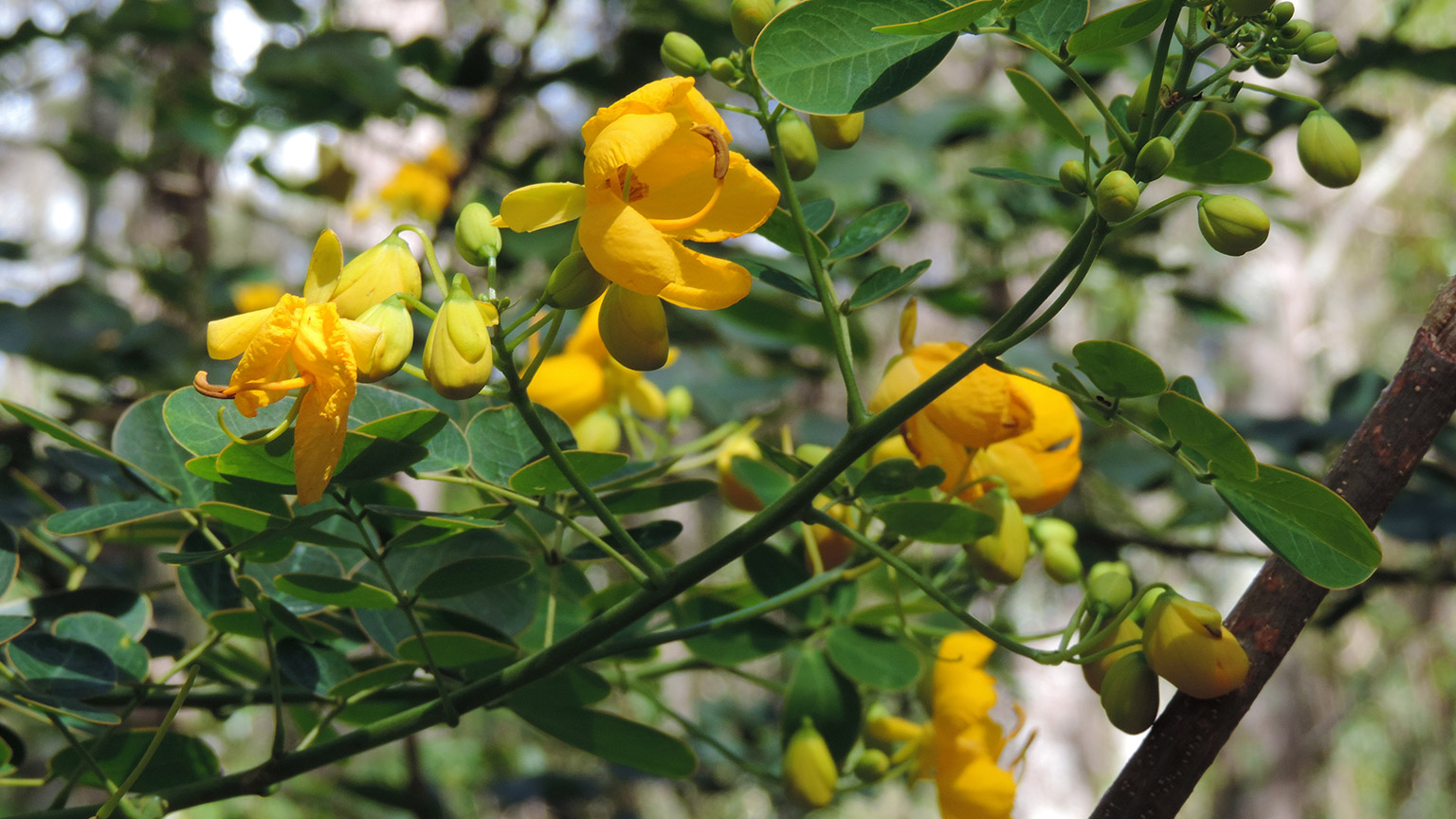 |
| Purpurea | "purple" | Large-flowered oxalis (Oxalis purpurea) | 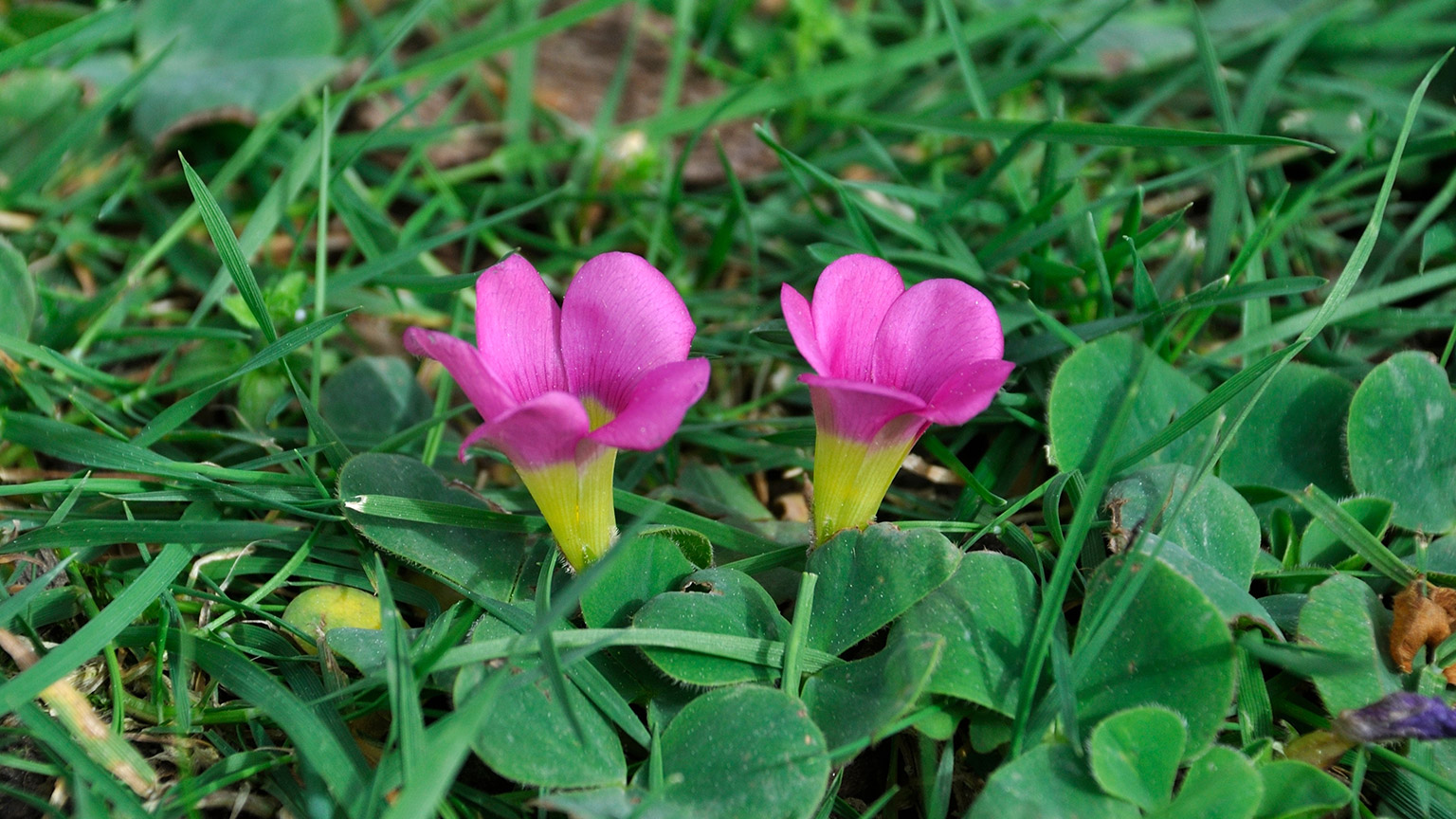 |
| Rubra | "red" | Red oak tree (Quercus rubra) |  |
| Sativa | "cultivated" | Lucerne (Medicago sativa) | 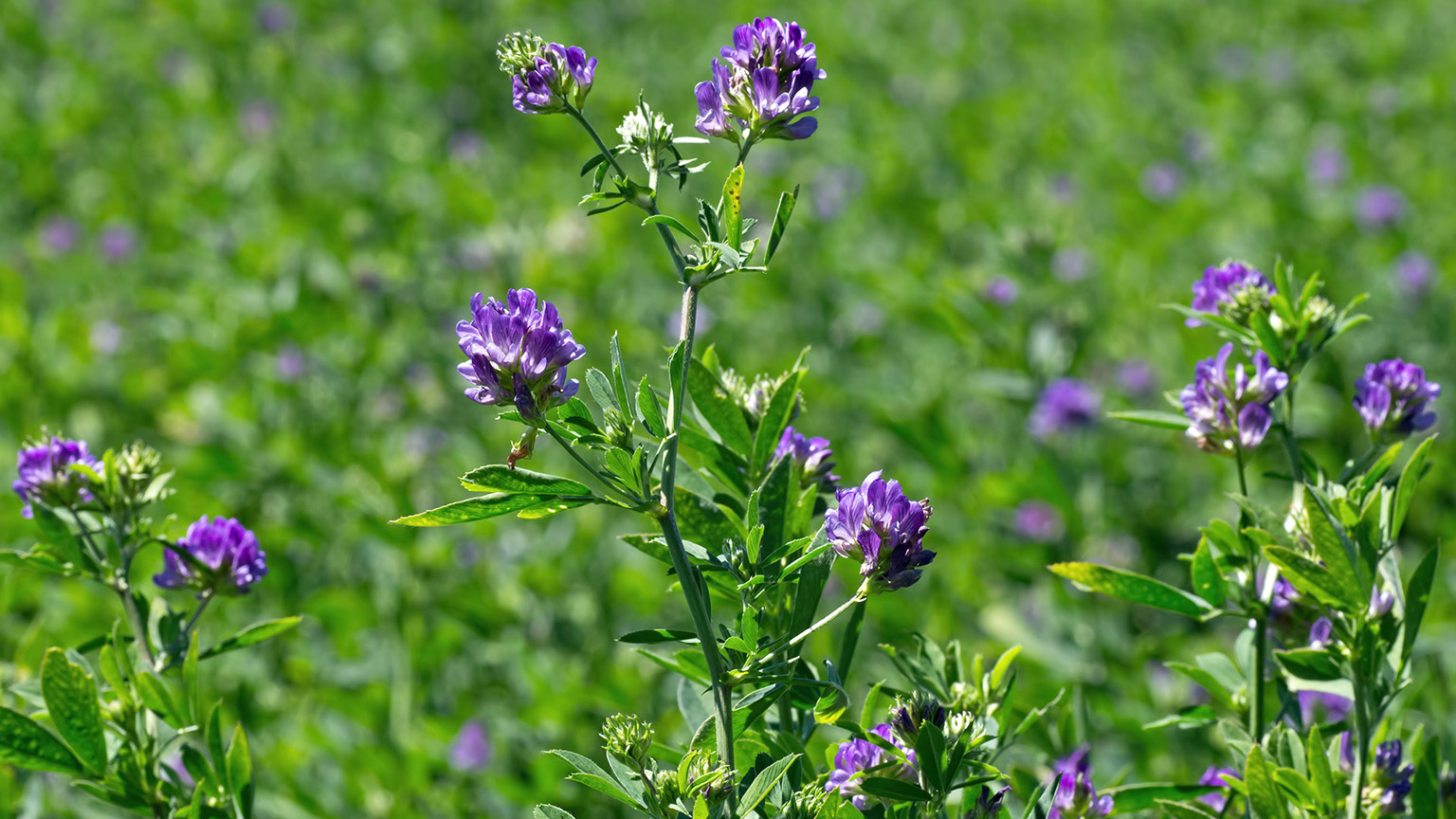 |
| Vulgaris | "common" or "widespread" | Common lilac (Syringa vulgaris) | 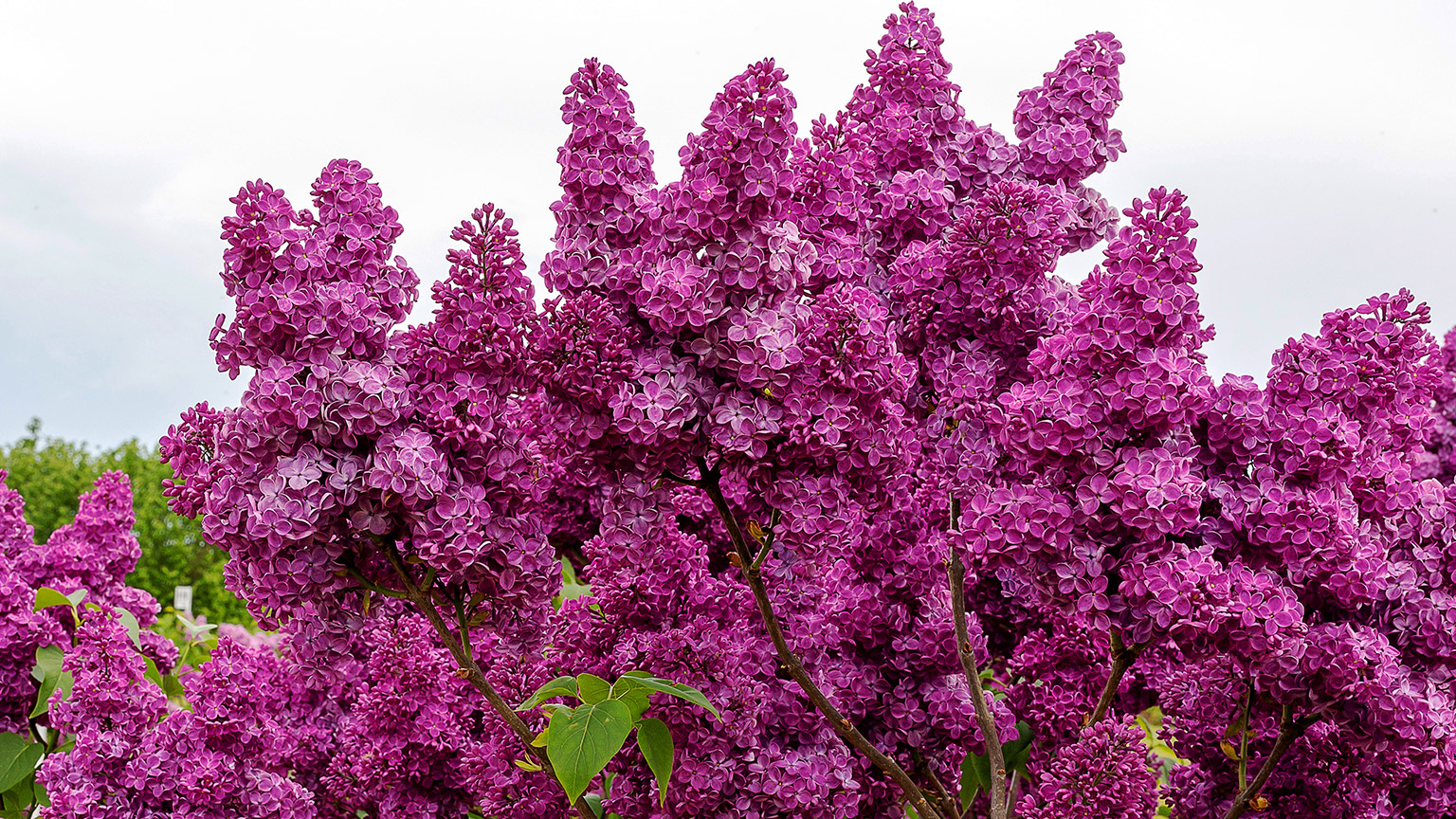 |
Knowing what these words mean can help us form a picture of what a plant might look like without even seeing it. Read the following questions and take a guess at what the plant may look like just by knowing the scientific names. Click the (+) to see if you are correct.
The Sparaxis grandiflora has large flowers by comparison to other Sparaxis flowers.

The leaves of the Coprosma grandifolia are indeed quite large.
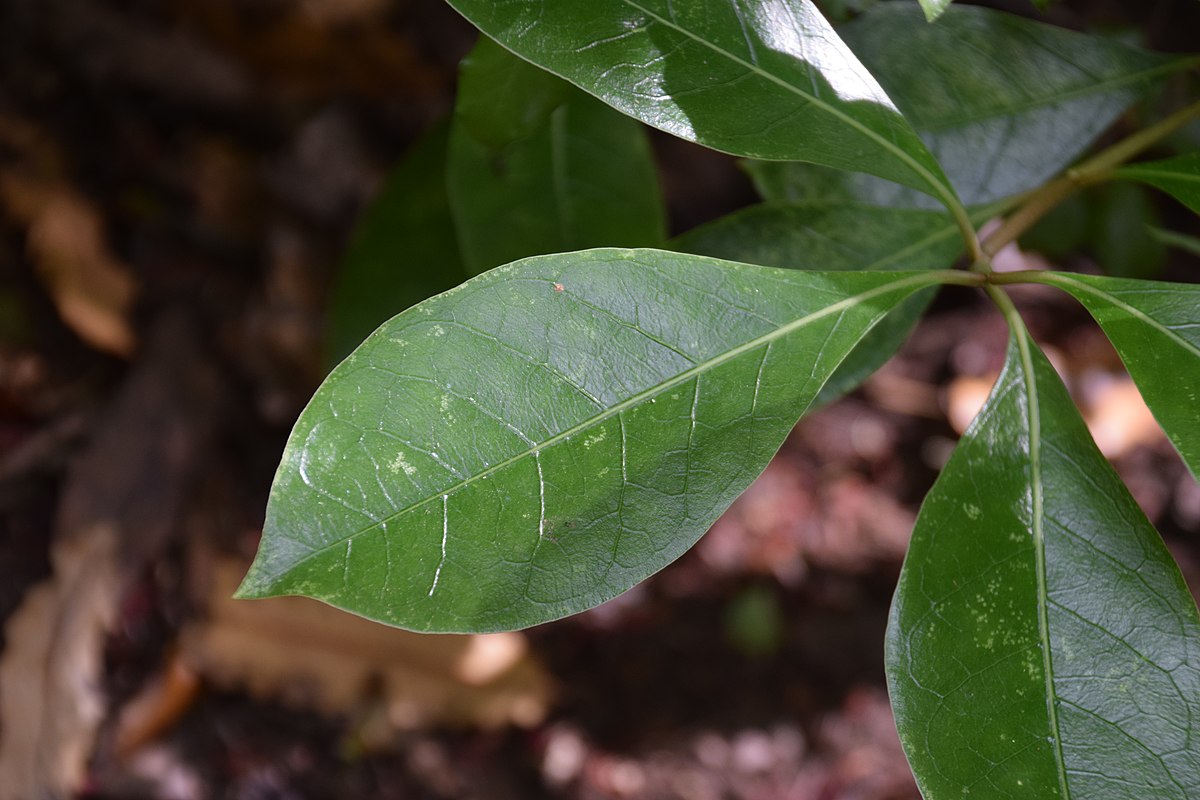
The leaves of an Acer Rubrum turn a beautiful shade of red as they die off in autumn.

The Lavandula dentata plant sports tooth-shaped leaf edges.
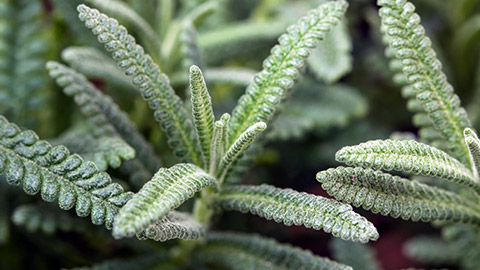
Note: Scientific names (genus and species together) should always be written in italics with the genus name capitalised and the specific epithet in lower case. We'll talk more about how to write a range of different scientific names in the next topic.
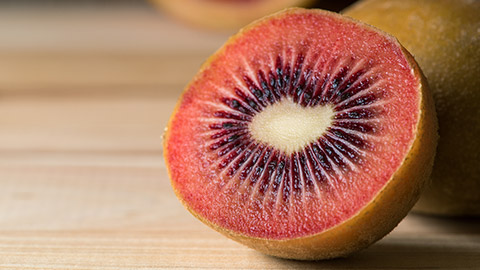
Now we can refer to a particular species by using its binomial (two-part) name, such as, Metrosideros excelsa, (pōhutukawa) but did you know that there can be variation within a species?
This variation within a species is classified by secondary taxonomic ranks, which essentially means there are more parts to the name than just the genus and specific epithet.
Variation within species can come about in a few different ways:
- Subspecies: A subspecies is the taxonomic level just below species. It can be defined as a group of individuals within a species that share distinct features, such as physical characteristics, geographic distribution, or ecological adaptation, but are still able to interbreed and produce viable offspring.
- Variety: In botany, a variety is a taxonomic rank used to classify a group of plants within a species that differs from the typical form of that species in one or more morphological characteristics.
- Cultivar: A cultivated variety or kind of plant that people have deliberately selected for specific traits and when propagated, keep those traits for future generations of the plant.
- Form: A form is a taxonomic rank used to classify a variant or subgroup of plants within a species that differs from the typical form of that species in one or more non-inherited characteristics. These characteristics can include growth habit, color, or other traits that are not genetically determined and can vary due to environmental or other factors.
- Hybrid: A hybrid is a plant that has been created through the crossbreeding of two different species or varieties. Hybrids often exhibit a combination of traits from both parent plants, resulting in unique characteristics that may not be found in either parent.
Botanical variety, plant variety, and cultivar
As mentioned above, in botany (plant science), variety is a taxonomic rank. It sits just below subspecies and just above form. This may also be called a botanical variety.
On the other hand, in plant breeding, in countries that are signed up to the UPOV Convention, the term variety, or plant variety, means a cultivar that is legally protected. Legal protection, such as registration of plant variety rights (PVR) or plant breeders' rights (PBR), means that growers can only grow these "varieties" if they pay the plant breeder a license fee. This is irrespective of how the grower comes to take ownership of the plants.
Plant breeders have wide-ranging rights when it comes to protecting their intellectual property rights, such as making snap inspections of the property of those who license their "varieties" to check if they are growing the correct number of plants.
For example, in 2017, Zespri Group Limited sued a licensed grower who they alleged had offered to sell/license these varieties to a grower in China and had grown excess amounts of these "varieties" in Aotearoa. Zespri is the plant breeder for several different kiwifruit "varieties".
The grower was forced to pay Zespri over $14 million dollars in lost royalties!
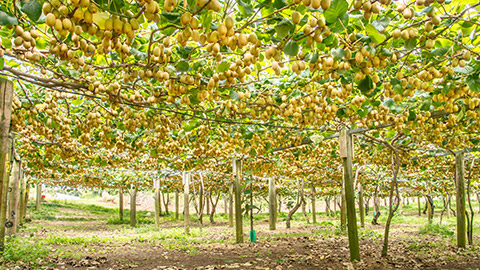
A cultivar is a taxonomic rank. Which the International Code of Nomenclature for Cultivated Plants (ICNCP) – which oversees the naming of cultivars – describes as:
Bricknell et al. 2009an assemblage of plants that (a) has been selected for a particular character or combination of characters, (b) is distinct, uniform and stable in those characters, and (c) when propagated by appropriate means, retains those characters.
Cultivars may relate to a species or genus. For instance, there are 39 recorded cultivars, of the pōhutukawa (Metrosideros excelsa) species, including:
- Metrosideros excelsa 'Aurea' – greenish-yellow flowers
- Metrosideros excelsa 'Moon Maiden' – sulphur yellow flowers
- Metrosideros excelsa 'Pink Lady' – melon-pink flowers.
In some cases, the parent plants that the cultivar has been bred from are unknown and in these cases, it is acceptable to have a cultivar name that excludes the specific epithet. This is common with roses cultivars, that have been bread for many generations, for instance Rosa 'Munstead Wood' (English rose 'Munstead Wood').
Activity – Secondary taxonomic ranks
Use this activity to consolidate your learning around these terms.

Scientific names can be a bit of a tongue twister, so you may want to practice saying the scientific name of common plants. As a horticulturist, you cannot come across as confident and professional if you're tripping over your words. That said, almost everyone struggles to pronounce these complex words and you can have confidence that most people in the industry will have been exactly where you are.
The first way to approach pronunciation is to see if you are familiar with any of the parts of the word and go from there.
Another way is one you are probably familiar with, simply sound out the word by breaking down the syllables. For example:
- Podocarpus totara: Po–do–carp–us to–ta–ra
- Griselinia littoralis: Gris–e–lin–i–a litt–or–al–is
- Metrosideros excelsa ‘Aurea’: Met–ro–sid–er–os ex–cel–sa au–re–a
Pronunciation help online
You can also use an online tool to say the word for you so you can hear it directly, such as Metrosideros excelsa from HowToPronounce.com. The good thing about that page is it offers multiple people saying the same thing. In this case, the first voice that pronounces the word at the top of the page goes very quickly and swallows some of the syllables. Scroll down the page and listen to the others. At the time of writing, the first one is the same recording, but the other two provide a great way to hear that each person pronounces it with their personal accent, comfort level, and speed.
Activity - Practice pronouncing plant names
The next time you are at a nursery:
- walk around and try to recognise plants by appearance and other clues
- say aloud a plant's common name and cultivar
- say aloud the scientific name if you know it, otherwise check the plant tag to find out
- practice on a staff member:
- ask for a plant by:
- its common name: "Do you have any Pohutakawa Aurea?"
- its scientific name and cultivar: "Do you have any Metrosideros excelsa Aurea?"
- its genus and cultivar: "Do you have any Metrosideros Aurea?"
- ask for a plant by:
Your horticultural site visits will also give you a chance to say these words and you are likely to hear them spoken. It would be a great time to show off your new skills!
Using scientific names in conversation is one thing, but writing them requires a little more care.
As a qualified gardener or horticulturalist, which you will be at the end of this programme, you'll be expected to write plant names according to botanical nomenclature conventions.
There are two ways of writing plant names:
- on a computer
- by hand.
Surprisingly, they are not exactly the same. Let's take a look at how to do both.
| Computer | By hand | |
|---|---|---|
| Species |
|
|
| Dacrycarpus dacrydioides | Dacrycarpus dacrydioides | |
| Subspecies |
|
|
| Phormium cookianum subsp. hookeri | Phormium cookianum subsp. hookeri | |
| Variety |
|
|
| Phormium tenax var. rubrum | Phormium tenax var. rubrum | |
| Cultivar where the species is known |
|
|
| Griselinia littoralis ‘Broadway Mint’ | Griselinia littoralis ‘Broadway Mint’ | |
| Cultivar where only the genus is known |
|
|
| Pittosporum ‘Golf Ball’ | Pittosporum ‘Golf Ball’ | |
| Form |
|
|
| Quercus robur f. fastigiata | Quercus robur f. fastigiata | |
| Hybrid |
|
|
|
Thymus x citriodorus Magnolia denudata x Magnolia liliiflora |
Thymus x citriodorus Magnolia denudata x Magnolia liliiflora |
Notes about written plant names
- Once you've written a plant's scientific name in full, you can abbreviate the genus name any other time you need to use it in the same document. For example:
- First use: Sophora microphylla
- Second and subsequent uses: S. microphylla
- If there is potential for confusion, stick to using the full name. For example: rather than using: "P. tenufolium and P. tenax are both native to Aotearoa", it would be better to say "Pittosporum tenufolium and Phormium tenax are both native to Aotearoa". This is because using P. for both implies they are from the same genus, which they are not.
- If referring to a cultivar, you can drop the species and just use the genus with the cultivar name. This is because cultivar names are overseen by the ICNCP, so there should be no chance of two species within the same genus having the same cultivar name. For instance, Grisilenia 'Broadway Mint' means Grisilenia littoralis 'Broadway Mint' as there is no Grisilenia lucida 'Broadway Mint'. But if in doubt, keep the genus name in.
Take some time to practice writing plant names using pen and paper and on your computer.
Synonyms are other scientific names that the plant has been known by in the past. For instance, the tī kōuka (cabbage tree, palm lily) has the scientific name Cordyline australis but has the following synonyms:
- Dracaena australis
- Dracaenopsis australis.
It is important to know about synonyms because in some cases the synonym is used more commonly than the verified scientific name.
For instance, Leptinella dioica is a small groundcover native to Aotearoa. It is cultivated for use on natural bowling greens. It was formerly classified as Cotula dioica but has since been reclassified as L. dioica, however, its old name has 'stuck' within the sports turf sector. If you needed to write about this plant, you could write Leptinella dioica (syn. Cotula dioica).
![[ADD IMAGE'S ALT TEXT]](/sites/default/files/Leptinella_dioica.jpg)
